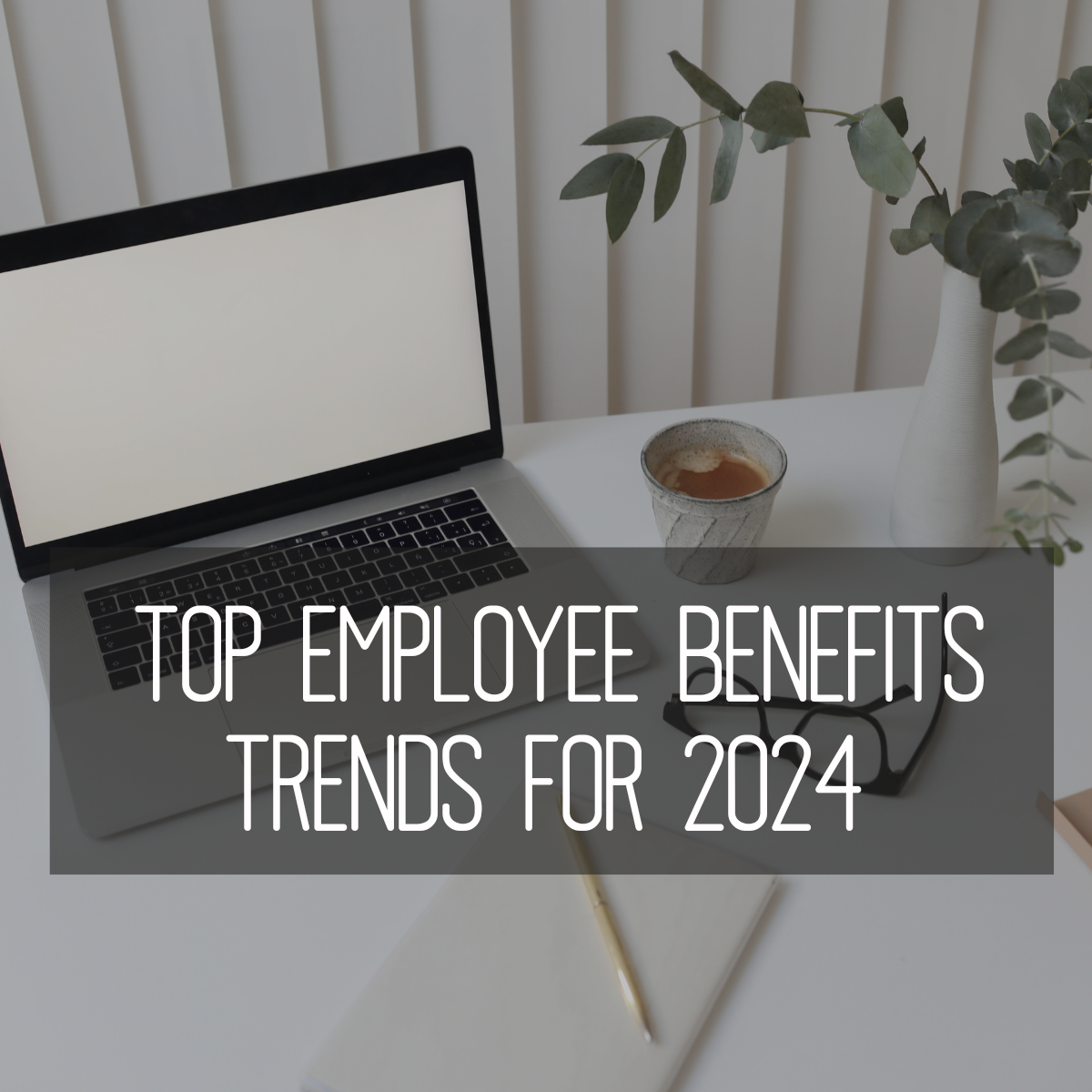News

Top Benefit Trends for 2024
The challenges that influenced the benefits landscape in 2023 persist—perhaps even more so. Rising costs, due to inflation and increasing health care prices, will continue to present challenges this new year. But employers who understand the benefits landscape for 2024 can mold their approach for the upcoming year.
A new year means revisiting your existing benefits strategy and looking at the top benefit trends:
Financial Wellness Benefits
Employees worry and stress about their finances and are searching for financial wellness education and guidance. Nearly 80% of employees say a financial wellness benefit is an important part of a comprehensive benefits package. Some of the popular financial wellness benefits are:
- Retirement Plan Options with Matching Contributions
- Health Savings Accounts
- Flexible Spending Accounts
- Financial Planning Assistance
- Flexible Paydays
- Employee Discount Program
- Financial Reimbursements (Ie. student loan repayment plans, child-care support funds and professional development stipends)
Voluntary Benefits
You can please some of the people some of the time, but you can’t please all the people all the time – unless you embrace voluntary benefits, that is. Voluntary benefits are optional perks that are offered to employees at a discounted group rate which their employer has negotiated with providers. While employees still need to pay to use these benefits, the amount is usually far less than it would be without company subsidies.
Moving forward, we can expect to see more sophisticated customization tools that allow employees to choose the benefits that best align with their individual circumstances and priorities. Whether it’s affordable veterinary insurance for pet owners, subsidized pre-K childcare for parents, or student loan repayment programs, offering these types of policies can directly improve the quality of life for employees who choose to take advantage of them.
Enhanced Family Benefits
Employers are increasingly looking to expand their family-friendly benefits for employees to better support employees in their caregiving roles.
- Paid family leave is not guaranteed by law in the U.S. but it is a highly sought-after perk. A parental leave policy – one that considers both parents and accounts for adoption and fostering in addition to childbirth – can show your employees you care about supporting their home lives.
- Childcare assistance supports working parents facing rising costs of living. While some larger employers may offer on-site childcare, smaller businesses can show their commitment to working parents by helping to subsidize the cost of childcare through employer contributions or pre-tax deductions.
- Fertility assistance supports employees who are going through costly infertility treatments, surrogacy, and IVF.
With four generations represented in the workforce, the support offered by employers can look different to Baby Boomers caring for their parents than a Millennial or Gen Zer caring for their children.
Inclusive and Flexible Care
The diverse workforce of 2024 is prioritizing a better work-life balance. It’s important to develop a benefits package that recognizes a healthy environment for your employees.
- Mental health benefits are in demand since mental health is a crucial part of overall health. Offering an employee assistance program (EAP) is a great way to support workers in tough situations.
- Work flexibility includes not only remote or hybrid work options, but you can also consider flexible start and stop times, a four-day work week or unlimited PTO to attract top talent and increase retention.
Overall, your benefits offerings for 2024 should reflect your organization’s values. Remember, your company depends on being able to keep your employees happy, healthy, and productive. Benefits that show respect for employees and promote a strong, vibrant culture are worth the investment.